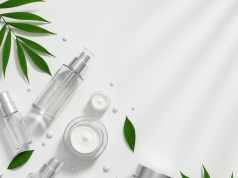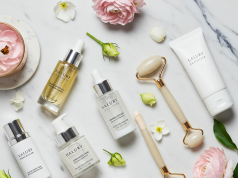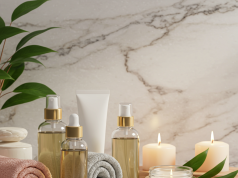Introduction
In the world of beauty, hydration is the cornerstone of healthy, radiant skin. No matter your age or skin type, proper moisture balance supports skin elasticity, reduces fine lines, and enhances your natural glow. In this ultimate guide, we’ll walk you through everything you need to know—from understanding your skin’s unique needs to crafting the perfect daily routine and discovering advanced hydration treatments. Get ready to transform your complexion and unlock the secret to lasting beauty.
Why Skin Hydration Matters
Hydration isn’t just about slathering on moisturizer; it’s about creating and maintaining a protective barrier that locks in moisture and keeps irritants out. When skin is well-hydrated:
- The barrier function strengthens, reducing redness and sensitivity.
- Fine lines and wrinkles appear softer and less noticeable.
- Skin tone evens out, resulting in a luminous complexion.
- Oil production balances, minimizing breakouts for combination or oily skin types.
Understanding Your Skin Type
Before choosing products or routines, identify whether your skin is dry, oily, combination, sensitive, or normal. Each type responds differently to humectants, emollients, and occlusives:
- Dry Skin: Benefits from rich creams containing occlusives like shea butter.
- Oily Skin: Prefers lightweight, water-based serums with humectants such as hyaluronic acid.
- Combination Skin: Needs a balanced approach—oil-free hydrators in the T-zone and richer creams on drier areas.
- Sensitive Skin: Look for fragrance-free, hypoallergenic formulas with soothing ingredients like aloe vera and chamomile.
Crafting Your Daily Hydration Routine
A consistent morning and evening routine will keep skin plump and protected around the clock. Follow these steps:
Morning Steps
- Cleanse with a gentle, sulfate-free cleanser to remove overnight oils without stripping moisture.
- Apply a hydrating toner or essence enriched with antioxidants.
- Layer a hyaluronic acid serum to attract and bind water in your skin.
- Follow with a lightweight moisturizer or gel cream suited to your skin type.
- Finish with broad-spectrum SPF 30+ to protect against UV-induced dehydration.
Evening Steps
- Double cleanse if you wore makeup or sunscreen to ensure all residues are removed.
- Use a nourishing toner or essence again to prep your skin.
- Apply targeted treatments like a ceramide or peptide serum for overnight repair.
- Seal everything in with a richer night cream or sleeping mask for deep hydration.
Top Ingredients for Ultimate Hydration
Look for these powerhouse ingredients when shopping for moisturizers and serums:
- Hyaluronic Acid: A humectant that can hold up to 1,000 times its weight in water.
- Glycerin: Draws moisture from the air into the skin’s outer layer.
- Ceramides: Lipids that restore the skin barrier and prevent water loss.
- Niacinamide (Vitamin B3): Strengthens the barrier, reduces redness, and improves texture.
- Squalane: A lightweight, stable oil that mimics your skin’s natural sebum.
- Shea Butter: Rich in fatty acids, ideal for dry or mature skin.
Seasonal Hydration Hacks
Your skin’s needs shift with the seasons. Adjust your routine accordingly:
- Winter: Swap to a heavier cream, use a humidifier, and protect with SPF even on cloudy days.
- Spring: Incorporate lightweight gels and antioxidant serums to fight environmental stressors.
- Summer: Opt for oil-free, non-comedogenic moisturizers and reapply lightweight SPF after swimming or sweating.
- Fall: Start reintroducing richer emollients and barrier-repair treatments as humidity drops.
Nutrition and Internal Hydration
Beautiful skin starts from within. Boost your skin’s moisture levels by:
- Drinking at least 8 glasses of water daily, or more if you exercise heavily.
- Eating water-rich foods like cucumbers, watermelon, and leafy greens.
- Including omega-3 fatty acids from sources such as salmon, chia seeds, and walnuts.
- Limiting excessive caffeine and alcohol which can dehydrate your body.
Common Hydration Mistakes to Avoid
Even the best products won’t work if you fall into these traps:
- Skipping SPF: UV damage accelerates water loss and aging.
- Over-exfoliating: Stripping the barrier makes it hard to retain moisture.
- Ignoring indoor climate: Air conditioning and heating dry out your skin.
- Layering incompatible actives: Incorrect combinations can cause irritation and redness.
Advanced Treatments for Deep Hydration
For those seeking a spa-level boost, consider professional and at-home treatments:
- HydraFacial: Infuses serums while exfoliating for immediate glow.
- Microneedling with Hyaluronic Acid: Enhances product absorption and collagen production.
- Overnight Sleeping Masks: Seal in moisture and active ingredients for hours of repair.
- LED Light Therapy: Promotes circulation and supports barrier function.
DIY Hydration Masks
Natural, at-home masks can complement your routine using kitchen staples:
- Honey & Yogurt Mask: Mix 1 tbsp raw honey with 2 tbsp plain yogurt; apply for 15 minutes.
- Avocado & Oatmeal: Mash half avocado with 1 tbsp ground oats for a soothing, rich mask.
- Aloe Vera & Cucumber Gel: Blend gel from one leaf with cucumber slices for a cooling treatment.
Maintaining Long-Term Results
Consistency is key. To preserve your glow:
- Stick to your core routine and adjust seasonally.
- Monitor how new ingredients affect your skin and introduce them one at a time.
- Stay hydrated and prioritize sleep for natural repair processes.
- Schedule regular professional treatments or at-home pampering sessions.
Conclusion
Achieving hydrated, glowing skin is within everyone’s reach. By understanding your skin type, choosing the right ingredients, and maintaining a consistent routine—both topically and internally—you can nurture a complexion that looks and feels its best. Embrace these hydration tips and watch as your skin transforms into the radiant, healthy canvas you’ve always wanted.









